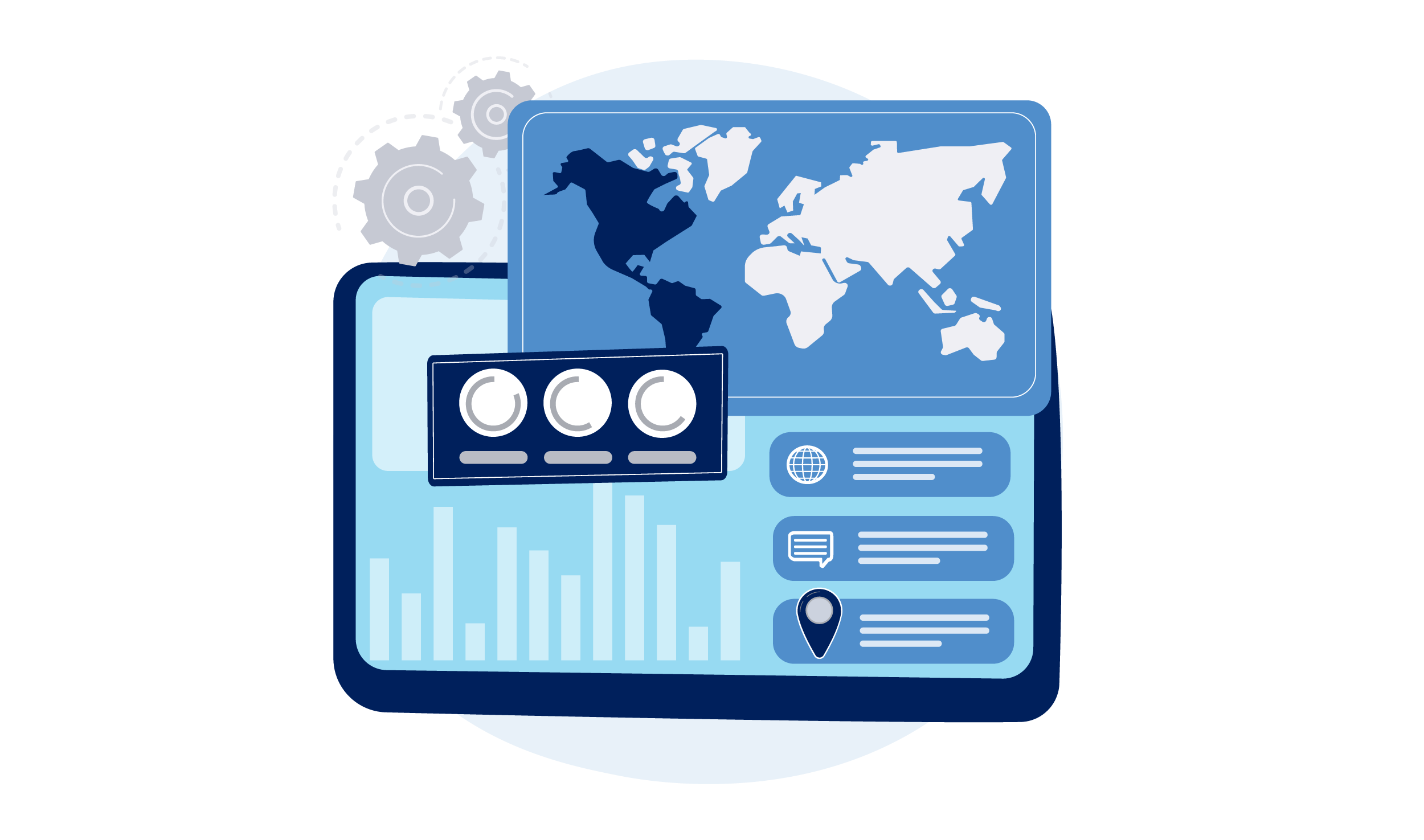In PAHO, Epidemic Intelligence is carried out by the Health Emergency Information and Risk Assessment (HIM) Unit at the Health Emergencies Department (PHE).
Through the HIM Unit, PAHO works in providing timely and authoritative situation analysis, risk assessment, and response monitoring for acute public health events and emergencies in the Americas, continuously coordinating the strengthening of the systematic detection, verification, and risk assessment of events, including training, coordination, and dissemination of accurate and timely information for all potential public health emergencies of international concern (PHEIC) and acute public health events under the International Health Regulations (IHR).
The HIM Unit serves as the main liaison for National IHR Focal Points communications under the IHR, as the designated WHO IHR Contact Point for the Region of the America.
24/7 Detection, Verification and Risk Assessment of Public Health Events under the IHR.
Collection, management, analysis and reporting on data related to public health events, emergencies, and disasters.
Development of basic operational tools and risk mapping.
Definition of minimal standardized information required for different emergency related activities/topics.
Development of prediction tools and modeling. Production of country risk profiles and their periodic updating.
Areas of Work
The PAHO Detection, Verification, and Risk Assessment team (DVA) collaborates with WHO headquarters, Regional Offices, PAHO Country Offices and Member States in carrying out event surveillance, risk assessment, and information management and disseminates. It also serves as the WHO International Health Regulations Regional Contact Point, providing support for Member States in establishing and implementing functional integrated early warning and response systems in order to improve early detection and rapid response to epidemic-prone diseases with pandemic potential and other public health emergencies.
Identifying events
In addition to directly receiving information from Member States, the Detection, Verification and Risk Assessment (DVA) team continuously screens informal or unofficial information sources to detect events or situations that may threaten international public health and for which Member States may require assistance. The DVA team gathers official reports and identifies rumors of suspected public health events from a wide range of sources.
Initial screening of information
Information obtained from unofficial or informal sources undergoes an initial screening, referred to as the initial risk assessment. A risk assessment is not considered complete until the event is verified by the Member State.
Verifying information
After the initial detection of an event is made from informal or extraofficial sources DVA verifies the information with the Member State. Requests for verification are sent to the National IHR Focal Point (NFP) of the respective Member State.
Available guidance
Related Link
Introduction
Risk assessment is the process of evaluating the probability and consequences of injury or an event arising from exposure to identified risks.
It is an interactive process that is initiated upon the detection of an event and continues until such event is under control. Risk assessment requires an interdisciplinary approach and the participation of PAHO/WHO technical experts, PAHO/WHO Country Offices and IHR National Focal Points.
Following a risk assessment, the IHR Annex 2 decision instrument for the assessment and notification of events is used by Member States to decide whether an acute public heath event requires notification to the WHO. The effective use of Annex 2 depends on the national authorities of each country and their respective IHR National Focal Point (NFP) who carry out the risk assessments of public health events occurring within their territories.
WHO has published guidelines describing when and how to apply Annex 2 to real situations.
Event notification criteria
To determine if an event must be notified to the WHO Contact Point, Member States must use the following criteria:
- Is the public health impact of the event serious?
- Is the event unusual or unexpected?
- Is there a significant risk of international spread?
- Is there a significant risk of international travel or trade restrictions?
Any event that meets any two out of the four criteria must be reported. The notification must be made within 24 hours of the assessment made in accordance with the decision instrument of the IHR (2005) Annex 2.
Following notification, communication must continue with accurate and sufficiently detailed public health information on the notified event, where possible including case definitions, laboratory results, source and type of the risk, number of cases and deaths, conditions affecting the spread of the disease and the health measures employed.
In addition, four conditions (smallpox, poliomyelitis due to wild-type poliovirus, human influenza caused by a new subtype, and severe acute respiratory syndrome (SARS)) must be reported to the WHO as they are inherently considered unusual or unexpected and may have serious public health impact.
Actions
Risk assessment is an ongoing process that can support one or more of the following actions at any point in time:
- Discard: events determined to have no present international risk at the time.
- Monitor: events that are considered to not presently be of international public health importance may require continuous assessment to ensure that they do not later present an international public health emergency.
- Assist: provision of technical assistance as may be required by Member States.
- Disseminate: event information to the international community to prepare for or prevent similar events.
- Escalate: in extreme and rare circumstances the WHO Director General may declare an event to be a Public Health Event of International Concern (PHEIC) based on available public health information. When an immediate global public health response is required to prevent or control the international spread of disease, the IHR(2005) calls on the WHO General Director to determine whether an event constitutes a public health emergency of international concern (PHEIC). In the process, the Emergency Committee, as provided for in the IHR (2005), shall advise the WHO Director General with regards to temporary recommendations on appropriate public health measures and requirements for the emergency.
Available guidance
The Detection, Verification and Risk Assessment (DVA) team disseminates information about international public health events through the publication of epidemiological alerts, interactive maps and reports available to the public.
Epidemiological Alerts
Epidemiological Alerts provide information about international public health events which have implications or could have implications for the countries and territories of the Americas; as well as recommendations issued by the Pan American Health Organization related to the event in question.
All alerts are archived here.
Regional Event Management System
The Detection, Verification and Risk Assessment team uses the WHO developed "Event Management System" to manage information on events in the Region of the Americas. This system makes it possible to disseminate critical event-related information between international public health professionals, including the PAHO/WHO Country Offices, specialized centers and other WHO Regional Offices.
The following types of information are stored in the system:
- Epidemiological situation
- Event verification
- Laboratory
- Field operations
- Tracking and recording outbreak history
- Critical decisions
- Important actions carried out by PAHO/WHO and partners
National Level Event Management System
To support event management at the national level, PAHO/WHO in collaboration with the Brazil and Chile Ministries of Health has developed a tool called the "System of Monitoring Events (SIME)."
SIME is a computer application designed for the registry and monitoring of national level public health events. Since its creation it has been modified and updated for compatibility with the registration and analysis of data requirements within the International Health Regulations (2005) framework. The current version is 7.0.1.4.
World Health Organization (WHO)
Information about disease outbreaks, surveillance, alert and response activities from the WHO Headquarters and Regional Offices may be accessed through the following sites:
- WHO Disease outbreak news
- WHO Regional Office for Africa: Epidemic and Pandemic Alert and Response
- WHO Regional Office for the Americas: Epidemiological Alerts and Updates
- WHO Regional Office for Europe: Health Emergencies
- WHO Regional Office for the Eastern Mediterranean: Disease outbreaks
- WHO Regional Office for South-East Asia: Surveillance and outbreak alert
- WHO Western Pacific Region: Emerging disease surveillance and response
PAHO's mapping team gathers and systematizes epidemiological data on epidemic-prone diseases in the region.
Data gathered by DVA, as well as the Epidemiological Analytics team, and other contributors in the Organization, is analyzed with a spatial-temporal lens utilizing Geographic Information System (GIS) to generate maps, dashboards, and other products that help national authorities understand the dynamics of outbreaks and guide the Organization’s response. Many of these products are available through these public interactive dashboards.
Epidemiological information on known epidemic-prone diseases in the region of the Americas is collected by PAHO on a regular basis to maintain updated databases. This information is the basis for internal analytics and reports which inform executive management on decision-making. With the information collected, the PAHO Epidemiological Analytics team provides epidemiological analysis when an outbreak occurs.
In addition, the team generates tools on modeling for forecasting/nowcasting for COVID-19 and others through user-friendly interfaces. This facilitates one one-on-one training with countries to improve their response capacities to outbreaks.
PAHO is also involved in helping countries implement early warning and alert response systems (EWARS) and thus has provided in-country technical assistance to the Ministry of Health and similar national authority counterparts in the region.
The EIOS Initiative
The EIOS initiative is a unique collaboration between various public health stakeholders around the globe. It brings together new and existing initiatives, networks and systems to create a unified all-hazards, One Health approach to early detection, verification, assessment and communication of public health threats using publicly available information.
Creating a community of practice for public health intelligence (PHI) that includes Member States, international organizations, research institutes and other partners and collaborators is at the heart of the initiative; saving lives through early detection of threats and subsequent intervention its ultimate goal.
PAHO provides support to Member States in reinforcing surveillance of health risks and threats. The EIOS System training is an integral part of expanding EIOS into Member States and indispensable for proper EIOS implementation.
EIOS has been implemented in the following Member States in the Region of the Americas:
2019: Argentina and Brazil (in-person)
2020: Dominica and Saint Lucia (remote training)
2021: Guatemala and Haiti (remote training). Additionally, the implementation of EIOS at the subnational level started in March 2021 in Brazil. As of November 2021, a total of 310 Brazil Ministry of Health professionals have been trained in the use of EIOS and the trainings are scheduled to continue reaching Health Units across the country.
Resources
Member States Resources
Other links you may be interested: Caribbean Disaster Emergency Management Agency (CDEMA)



